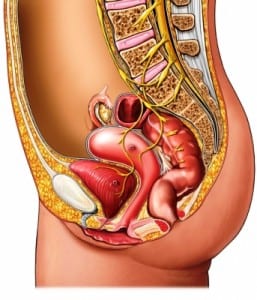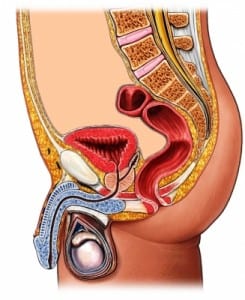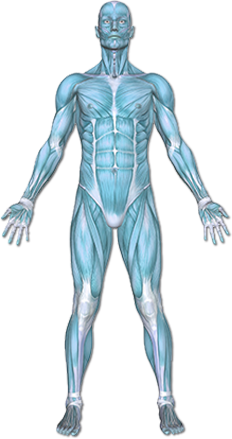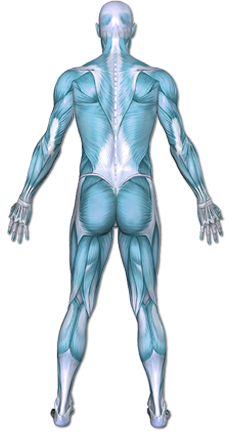Pelvic Pain
Pelvic pain is located between the navel and the hips and groin. If it lasts for six months or more it is called chronic pelvic pain. It is often difficult to determine the source of the pain. Pelvic pain can be caused by problems related to:
- Female reproductive organs
- Intestines
- Nerves
- Bladder
- Prostate


Copyright © Nucleus Medical Media, Inc.


Copyright © Nucleus Medical Media, Inc.
This content was created using EBSCO’s Health Library
Chronic pelvic pain can be caused by a wide variety of conditions.
- Gynecological conditions
- Endometriosis
- Pelvic inflammatory disease
- Fibroids
- Pain when ovulating
- Menstrual pain
- Adenomyosis
- Cysts
- Pelvic congestion syndrome
- Gastrointestinal conditions
- Urinary conditions, such as bladder infection or urinary tract infection
- Psychological conditions, such as depression, or a history of physical or sexual abuse
- Neuromuscular conditions
- Pudendal neuralgia
- Muscle pain
- Nerve pain
- Lower back pain
- Joint and bone pain
- Muscle strain
This content was created using EBSCO’s Health Library
Having one of the conditions listed above increases your chance of having chronic pelvic pain. Other factors may include:
- Miscarriage
- Cesarean section
- Alcohol or drug abuse
- Heavy menstrual flow
This content was created using EBSCO’s Health Library
Symptoms may include:
- Constant pain or dull ache in pelvic area
- Burning, shooting pain
- Rectal urgency
- Pain that comes and goes
- Pain that ranges from mild to severe
- Pain with certain activities
- Pain with prolonged sitting
This content was created using EBSCO’s Health Library
You will be asked about symptoms and medical history. A physical exam will be done. You may be asked to keep a pain journal to help the doctor diagnose the pain. You will be asked to write down when the pain occurs, how it feels, and how long it lasts. Bodily fluids may be tested. This can be done with:
- Blood and urine tests
- Cultures and swabs
- Tests for sexually transmitted diseases (STDs)
Bodily structures may need to be viewed. This can be done with:
- Laparoscopy
- Cystoscopy
- Sigmoidoscopy
- Intravenous pyelography
- X-rays
- MRI scan
- CT scan
This content was created using EBSCO’s Health Library
The source of pelvic pain can be from many different causes. Depending on the findings of the physician and results of the physical therapy evaluation, your therapist can design a program that helps restore strength, range of motion, muscle control and awareness. These interventions along with other modalities, like biofeedback and manual therapy, will help reduce pain and restore function.
This content was created using EBSCO’s Health Library
Preventing chronic pelvic pain depends on the condition causing it. Some causes are not preventable. STDs cause many conditions that result in chronic pelvic pain. Use latex condoms every time you have sexual intercourse, and minimize the number of sex partners you have.
This content was created using EBSCO’s Health Library
This content was created using EBSCO’s Health Library


